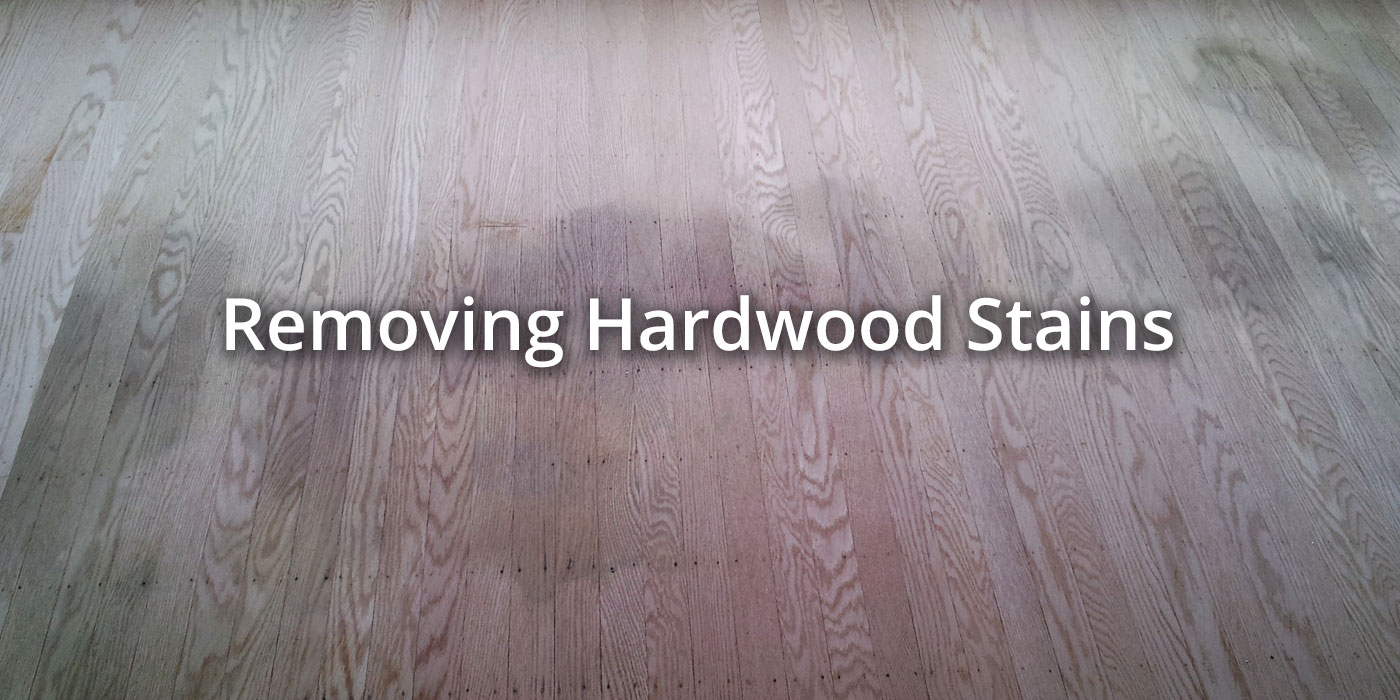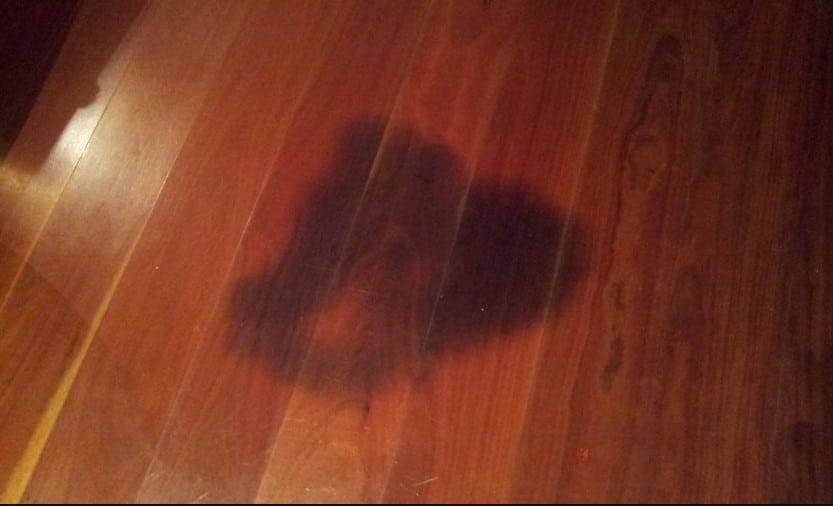Imagine this: you’re showing off your beautiful hardwood floors, gleaming with pride, and then, disaster strikes. A lingering odor hits your nose, and your eyes fall upon a discolored patch. You’ve discovered an old urine stain, a testament to a past accident or perhaps a pet’s unfortunate habit. While the initial shock may pass, the stain remains, a constant reminder of the mishap. But don’t despair! With the right knowledge and some elbow grease, you can banish even the most stubborn stains, restoring your hardwood floors to their former glory.

Image: mromavolley.com
Tackling old urine stains on hardwood floors is a common concern, especially for pet owners or families with young children. These stains can be deeply embedded in the wood, creating an eyesore and potentially even damaging the floor’s finish. This article will equip you with the tools and techniques to effectively remove old urine stains, giving your hardwood floors a fresh start. We’ll delve into the science behind why these stains are so persistent, the different cleaning agents and methods that work best for removing them, and even offer tips for preventing future mishaps.
Understanding Urine Stains: The Science Behind the Stubbornness
Urine, composed mainly of water, urea, and uric acid, can be a formidable opponent when it comes to hardwood floors. Here’s why:
- Uric acid, a major component of urine, is a strong acid that can damage the wood’s finish. This acid penetrates the wood’s pores, leaving behind a yellow or brown discoloration.
- The urea in urine breaks down into ammonia, creating a pungent odor. This ammonia can also react with certain wood finishes, exacerbating the discoloration.
- Urine stains can seep into the wood’s pores, making them harder to remove. If left untreated, the stain can become increasingly resistant to cleaning efforts.
Preparing for Battle: Essential Tools and Supplies
Before you wage war against the urine stain, gather your arsenal of cleaning supplies:
- A good quality hardwood floor cleaner: Choose a cleaner specifically designed for hardwood floors, avoiding harsh chemicals that could damage the finish.
- White vinegar: Vinegar’s acidity helps break down urine stains and neutralize odors.
- Baking soda: Baking soda acts as a mild abrasive, helping to lift the stain and absorb odors.
- Hydrogen peroxide: This oxidizer helps to break down the staining components in urine.
- Dish soap: Dish soap helps to lift grease and grime, adding extra cleaning power.
- Old cloth rags or paper towels: Absorb excess moisture and clean up spills.
- A small bowl or bucket: For mixing cleaning solutions.
- Rubber gloves: Protect your hands from harsh chemicals.
- A stiff-bristled brush: For scrubbing stubborn stains.
- A hairdryer or fan: To help dry the floor after cleaning.
Tackling the Stain: A Step-by-Step Guide
Now that you have your tools, follow this step-by-step guide to eliminate the urine stain:

Image: weekendmaids.net
1. Clean the Surface: Removing the Initial Soiled Layer
Start by removing any surface residue using your chosen hardwood floor cleaner. This will remove fresh urine and other contaminants before tackling the deeper stain.
2. Vinegar and Baking Soda Power Couple: A Natural Solution
Mix a solution of equal parts white vinegar and water in a bowl. Use this vinegar mixture to saturate the stained area. Allow the vinegar to sit for about 15 minutes, giving it time to penetrate the wood and break down the urine components. While the vinegar is working its magic, sprinkle baking soda over the stain to help absorb odors and further lift the stain.
After the waiting period, gently scrub the surface with a soft-bristled brush, taking care not to damage the wood. Rinse the area thoroughly with water and let it air dry completely. Repeat these steps if needed, especially if the stain is stubborn.
3. Hydrogen Peroxide: The Oxidizing Powerhouse
For more persistent stains, hydrogen peroxide can be a powerful ally. Combine a 3% hydrogen peroxide solution with a small amount of dish soap. Apply this mixture to the stain and allow it to sit for approximately 30 minutes. The hydrogen peroxide helps to oxidize the stain, breaking down the pigments, while the dish soap softens the stain and helps it to lift from the surface.
After the waiting period, gently scrub the area with a brush and rinse thoroughly with water. If necessary, repeat this process for maximum stain removal.
4. The Final Touch: Polishing and Protecting your Floors
Once the stain is gone, your hardwood floors may need a little extra TLC. Polish your floors with a high-quality floor polish designed for hardwood. This will help to restore the shine and protect the wood from future stains and damage.
Preventing Future Mishaps: Proactive Steps to Protect Your Floors
Prevention is key when it comes to urine stains on hardwood floors. Here are some proactive steps to keep your floors stain-free:
- Accident-proof your home: Take steps to prevent accidents, such as using puppy pads for pets and installing baby gates.
- Clean up spills immediately: Act quickly when accidents happen, blotting up spills with an absorbent cloth.
- Regularly clean your floors: Regular cleaning will remove dirt, grime, and other contaminants that can make your floors more susceptible to stains.
- Apply a sealant: A sealant can help protect your hardwood floors from spills and stains.
Beyond Stain Removal: When Professional Help is Required
While the techniques outlined above can address many urine stains, some stains may be too deep-seated for home remedies. If you’re dealing with a stubborn stain that doesn’t respond to your efforts, or if you notice signs of wood damage, it’s best to consult a professional floor restoration specialist.
How To Remove Old Urine Stains From Hardwood Floors
Conclusion: A Pristine Finish, a Renewed Home
Remember, urine stains on hardwood floors don’t have to be a permanent fixture in your home. With patience, the right cleaning agents, and a bit of elbow grease, you can banish these stubborn stains and restore your hardwood floors to their original beauty. By taking proactive steps to prevent future incidents and addressing stains promptly, you can keep your floors shining for years to come. So, don your cleaning gloves, grab your supplies, and conquer those urine stains, leaving your floors looking fresh and inviting. And for those especially tough stains, don’t hesitate to call in the professionals! Your hardwood floors will thank you for it.





